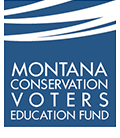FOR IMMEDIATE RELEASE
April 18, 2023
BLM Rule a win for conservation across the West
(HELENA, MT) – Today, we applaud the Bureau of Land Management’s (BLM) new “Public Lands Rule” which balances multiple-use by putting conservation, cultural lands protection, access to nature, wildlife, renewable energy and climate change mitigation on equal footing with development across the West.
The widely popular rule was shaped by a robust public process with 92% of public comments in support of the rule following a 90-day public comment period. In addition to broad public support, numerous western lawmakers, local elected officials, governors and newspaper editorial boards have publicly supported the rule.
BLM lands are among the nation’s most iconic open areas in the West, including nearly 8.1 million acres in Montana alone. These public lands support surrounding economies, provide a home for wildlife, ensure access to the outdoors, and safeguard innumerable stories of human experiences on the land.
“Montanans are elated with the new BLM rule to protect and safeguard cultural areas, wildlife habitat, and outdoor access and recreational opportunities. This is a once-in-a-generation opportunity,” said the MCV Education Fund’s Executive Director Whitney Tawney. “With this rule, the BLM is living its mission to responsibly manage public lands, human stories and wildlife that make Montana and the entire American West so unique.”
With nearly 40% of all U.S. public lands overseen by the BLM, the Public Lands Rule clarifies that managing BLM land for conservation fits squarely within the agency’s legal mandate – and that conservation sits on equal footing to other uses. This clarification is necessary, because the vast majority of BLM lands are currently open to extraction and other commodity-driven development.
The agency and Biden administration must be commended for recognizing the importance of our nation’s public lands to our environment, local economies and quality of life. The rule is long overdue and will better support those who have stewarded these lands for centuries but are feeling direct impacts of a shifting climate.
“We also applaud the BLM’s transparency and public accessibility,” Tawney said. “The 90-day comment period and numerous public meetings provided meaningful opportunities for the agency to hear what recreationists, Tribal communities, ranchers, energy developers, hunters/anglers and many others grapple with on public lands.”
The conservation of America’s iconic Western landscapes will better protect food and water supplies, ensure wildlife thrive and maintain healthy ecosystems and communities to support future generations.

